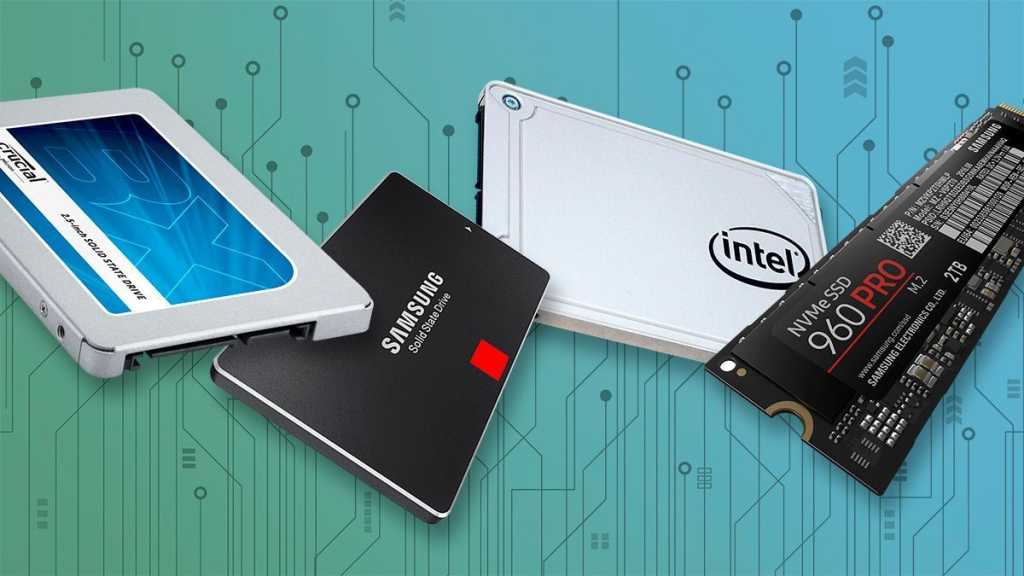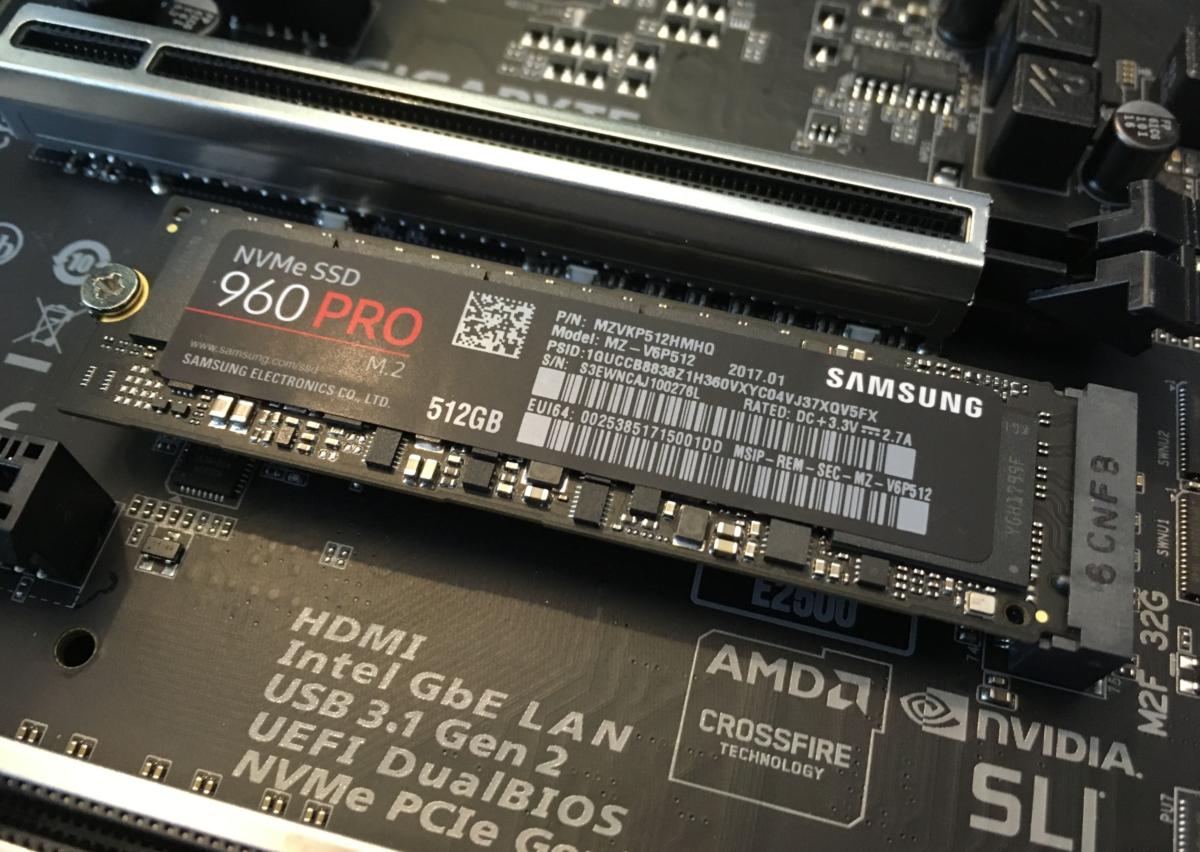Switching to a solid-state drive is the best upgrade you can make for your PC. These wondrous devices speed up boot times, improve the responsiveness of your programs and games, and generally make your computer feel fast. But not all solid-state drives are the same. You can spend big to achieve read and write speeds that reach a whole other level, or you can find top-notch SSDs that offer solid performance without breaking the bank.
Many SSDs come in a 2.5-inch form factor and connect to your PC via the same SATA port used by a traditional hard drive. But tiny NVMe (Non-Volatile Memory Express) “gumstick” SSDs that fit in an M.2 connection on a modern motherboard are becoming increasingly common, along with blazing-fast PCIe 4.0 (and now 5.0) solid-state drives for compatible PCs; you’ll even find SSDs that sit on a PCIe adapter and slot into your motherboard like a graphics card or sound card. No, picking the perfect SSD isn’t as simple as it used to be.
PROMOTION
Clone & Migrate SSDs | EaseUS Disk Copy

Ready to upgrade to SSDs? EaseUS Disk Copy helps you make it in one click. This straightforward disk cloning software clones HDD/SSD from most manufacturers, migrates data from HDDs to SSDs and clones an SSD to another under Windows. It aligns 4K sectors and autofits the SSD layout for best performance.
Why you should trust us: It’s in our name, PCWorld. Our reviewers have been testing PC hardware for decades. Our storage evaluations are thorough and rigorous, testing the limits of every product — from performance benchmarks to the practicalities of regular use. As PC users ourselves, we know what makes a product stand out. Only the best SSDs make this list. For more about our testing process, scroll to the bottom of this article
See also PCWorld’s guide to the best external drives if you’re strictly looking for a portable storage solution.
Updated June 27, 2024: If you’re on the hunt for an SSD to upgrade your Lenovo Legion Go or Thinkpad, Sabrent’s Rocket Nano 2242 is worth considering. It’s designed to fit the proportions of Lenovo’s portables, and happens to be a good performer to boot. If your interests are with PCIe 5.0, Corsair’s MP700 Pro SE comes very close to taking the performance crown, and could be a very compelling option if its price comes down.
Samsung 870 EVO – Best SATA SSD
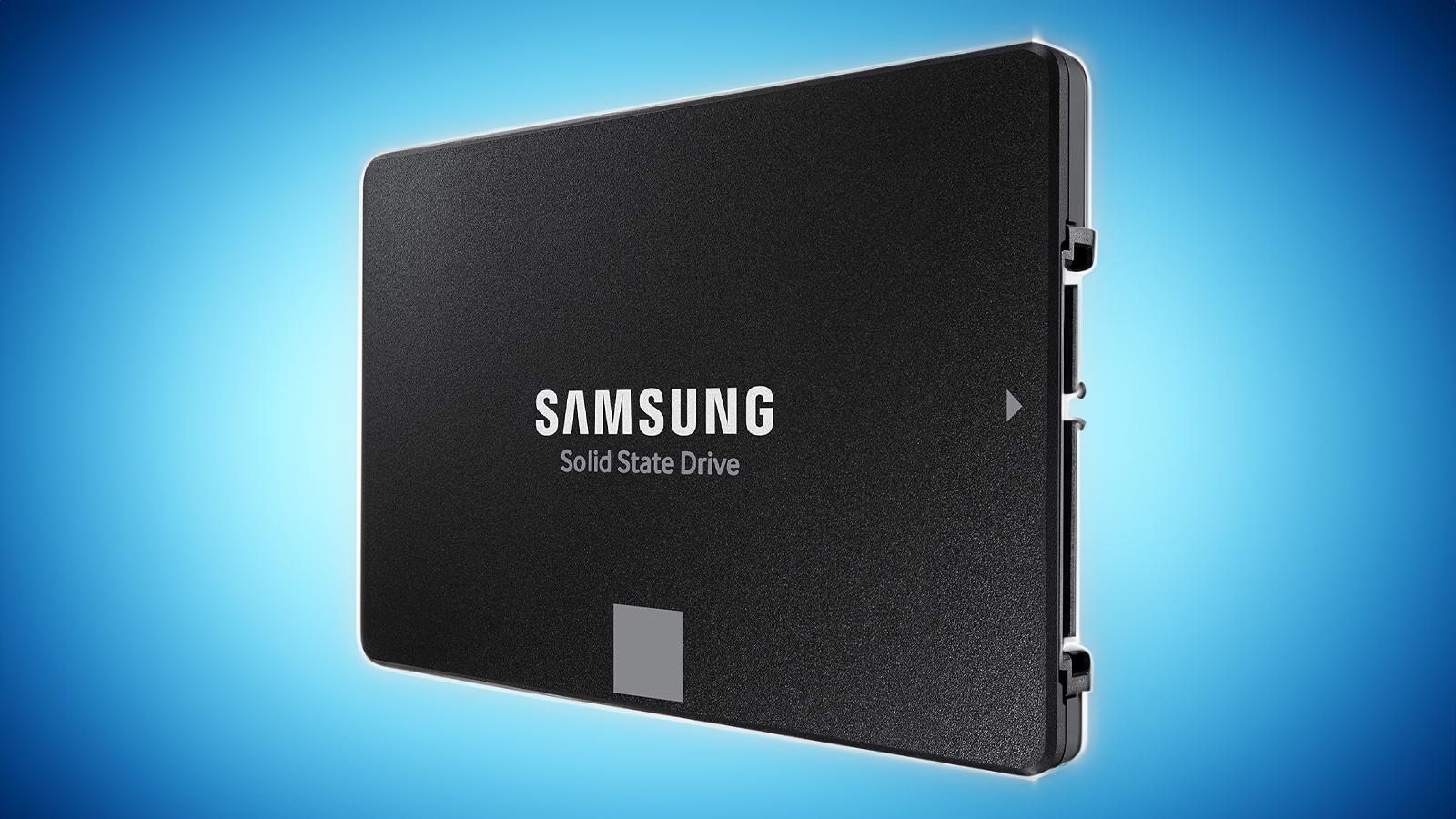
Pros
- Excellent performance, especially with small file operations
- Unlike the QVO, long writes don’t slow down
Cons
- A little expensive
If you’re looking to add some storage via a traditional 2.5-inch SATA drive rather than a tiny M.2 “gumstick,” Samsung’s spectacular 870 EVO is your best bet. It’s the fastest SATA SSD we’ve tested, it’s available in up to 4TB of capacity, and it’s exceedingly affordable given its speed. Enough said, really—though Samsung’s killer Magician SSD management software and long warranty period also deserve a shout-out. The EVO series is a legend among SSDs for a reason.
That said, the SK Hynix Gold S31 is also worth considering. It’s just a hair behind the 870 EVO in benchmarks and costs $12 less in its 1TB version, at $98. The SK drive is only available in a 1TB flavor these days, however, while the 870 EVO ranges from a 250GB model for $60 all the way up to a massive 4TB goliath for $450. Samsung’s 1TB offering costs $110.
Crucial BX500 – Best budget SATA SSD
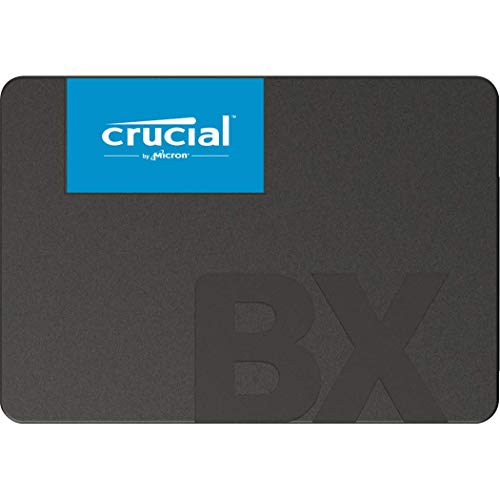
Pros
- Good everyday performance
- Low price per gigabyte
Cons
- Slows drastically when secondary cache runs out
The Samsung 870 EVO offers an intoxicating blend of performance and affordable pricing, but if you want as much capacity as possible for as cheaply as possible, consider the Crucial BX500. You can get its 1TB model for $41.99, a whopping $50+ less than the equivalent EVO, while a 480GB version costs just $24.99. 240GB and 2TB versions are also available.
“We recommend this QLC drive in the larger capacities for those who want good everyday performance for a budget price,” we said in our review. “The smaller capacities will likely run into more slowdowns during heavy writes.”
Crucial P3 – Best PCIe 3.0 SSD
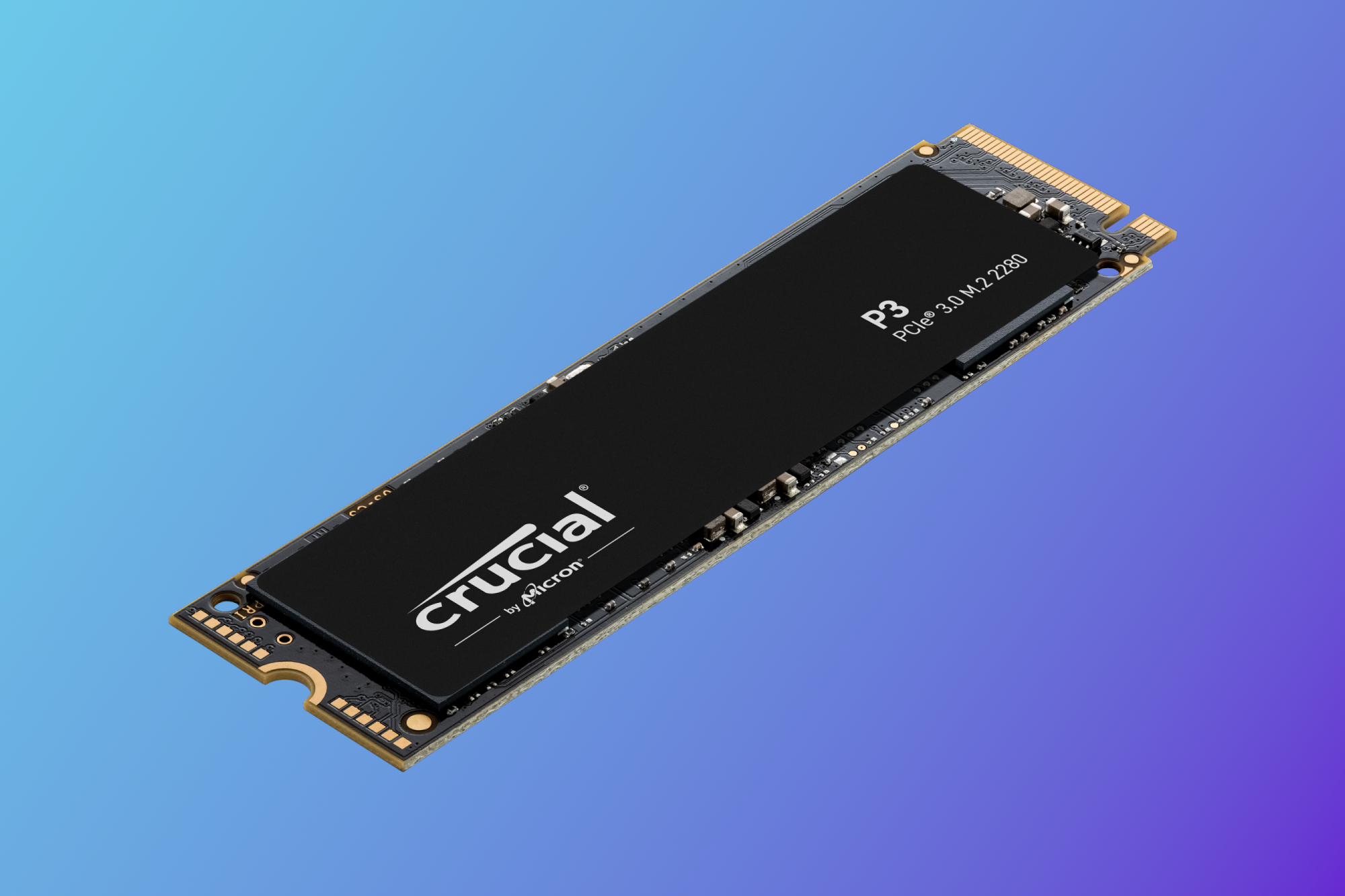
Pros
- Excellent everyday PCIe 3 performance
- Fantastically low price per GB
Cons
- Very low TBW rating
- Non-cached QLC writes are extremely slow
Sure, PCIe 4.0 SSDs scream during big file transfers, but if you’re still using an older system with PCIe 3.0, upgrading to an NVMe SSD still provides substantial benefits to your PC’s speed and overall responsiveness. Better yet, you don’t need to break the bank to take advantage. The Crucial P3 is a very good daily performer, but it’s available for a bargain rate of just $44 for a 500GB model or $84 for a 1TB model. Though it doesn’t have top-tier PCIe 4 performance and the TBW rating is pretty low, the P3 does have excellent real-world write times and unless you really stress the drive you shouldn’t notice much of a difference anyhow.
All told, this drive is an outstanding choice for anyone looking to snag a solid everyday SSD at a great price.
WD Blue SN580 SSD – Best budget PCIe 4.0 SSD
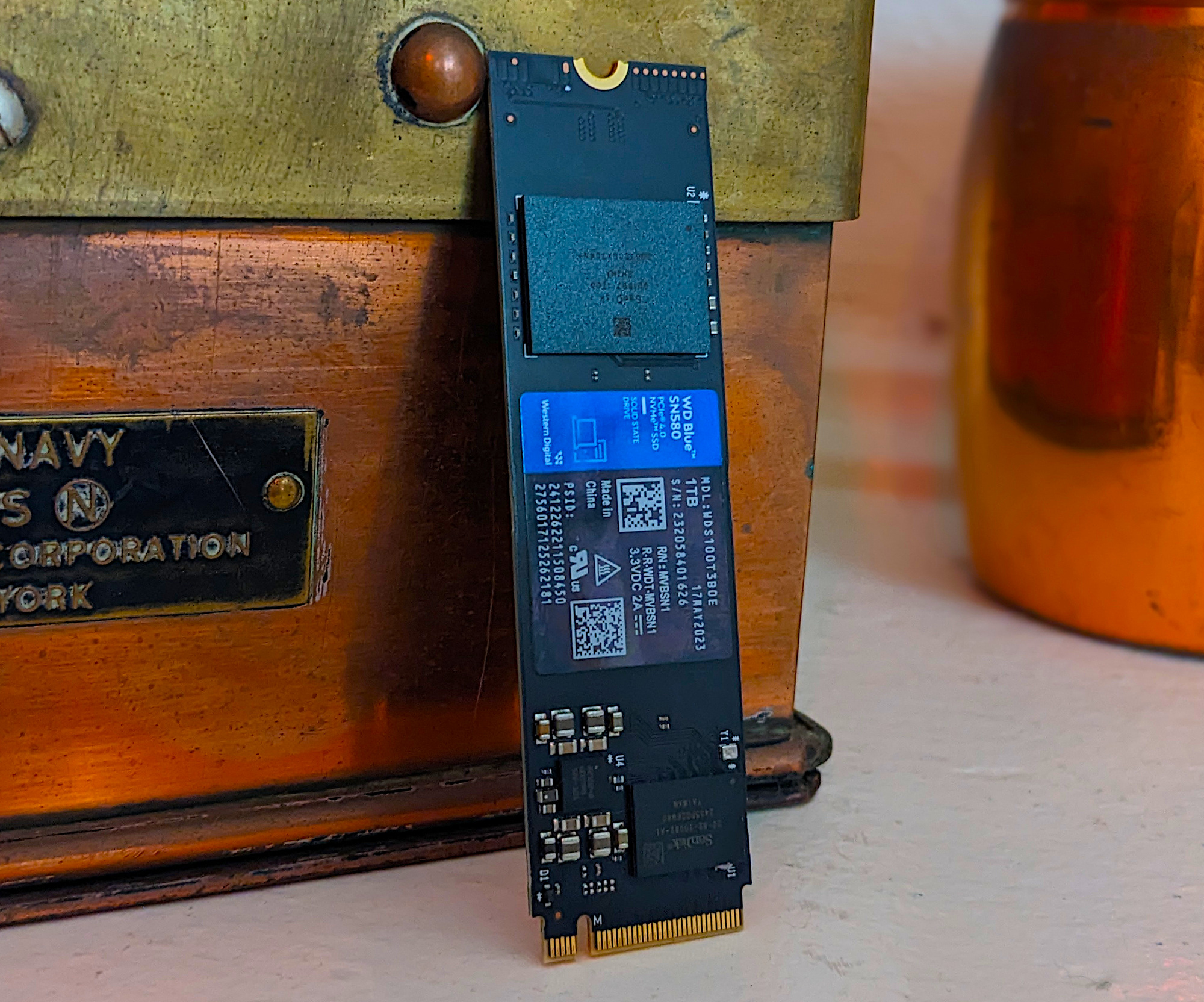
Pros
- Fantastically affordable
- Super fast real world transfers
- Single-sided for laptop upgrades
Cons
- Slows to less than 300MBps when writing off secondary cache
- Slightly low endurance rating
Cutting-edge PCIe 4.0 SSDs aren’t quite as cheap as SATA or PCIe 3.0 NVMe drives, but now that the technology is becoming more established, we’re starting to see several models available at compelling prices. The best of the affordable bunch? The WD Blue SN580 NVMe SSD—and by quite a large margin. At just $50 for a 1TB model, you won’t likely find any PCIe 4.0 drives with storage that cheap. In our testing, the SN580 turned out both stellar benchmark and real-world results. It did slow down considerably in the large 450GB transfer test, but seeing as how it’s unlikely anyone will write that much contiguous data it likely doesn’t matter. In the end, the SN580 is a wonderfully high-performing PCIe 4.0 SSD that well undercuts the cost of competitors. At this price point it simply can’t be beat.
Solidigm P44 Pro SSD – Best PCIe 4.0 SSD
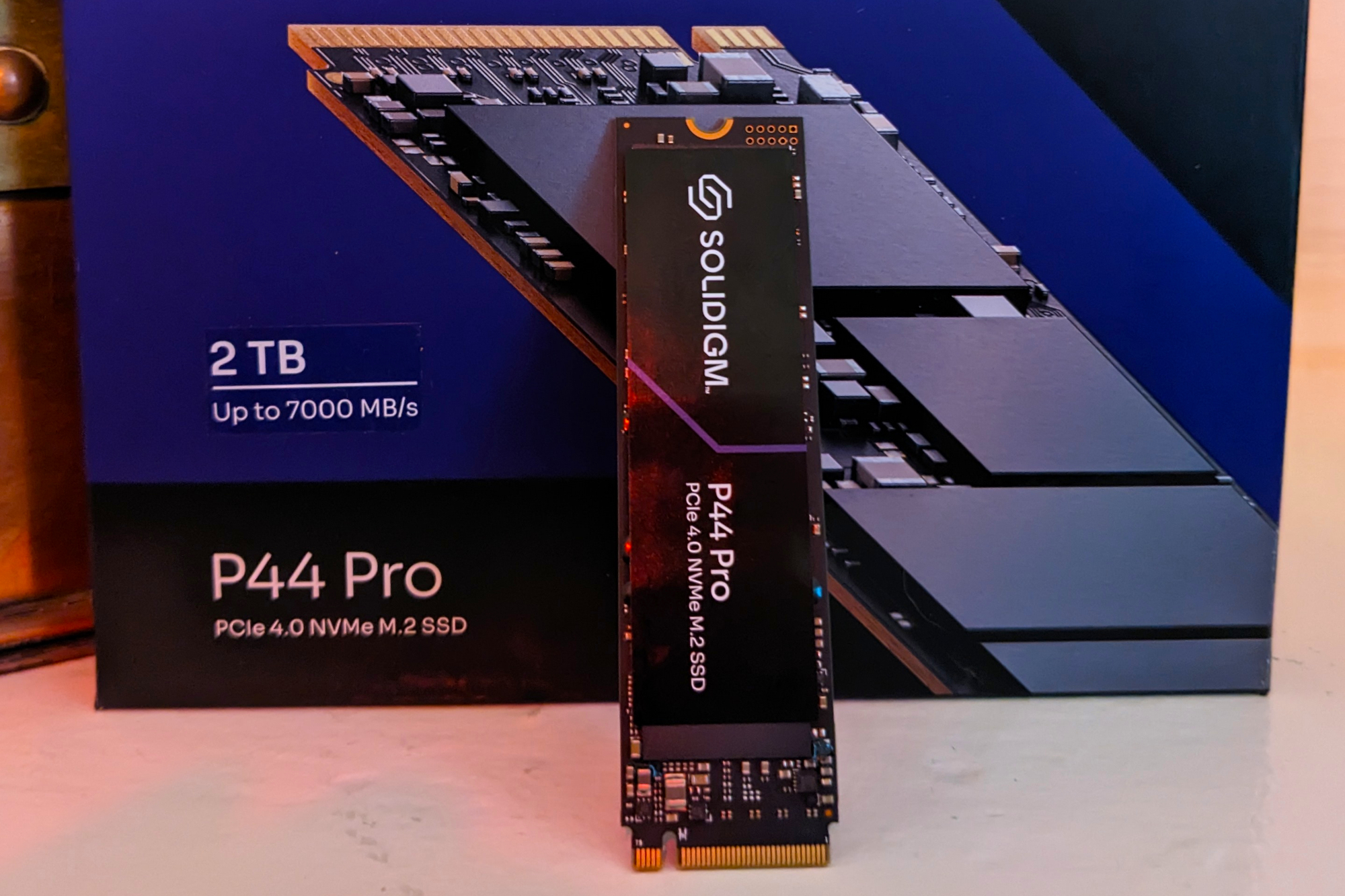
Pros
- Fastest PCIe 4.0 SSD to date
- DRAM facilitates excellent random performance
- Synergy low-level Windows driver improves random performance further
Cons
- Inconsistent pricing on web
The Solidigm P44 Pro is the fastest PCIe 4.0 drive we have ever tested bar none. In fact, it finished within the top five fastest drives in our tests, and was only beaten by three next-gen PCIe 5.0 drives. Plus, it becomes even faster when you install the Solidigm Windows driver, which further improves random performance in small read/writes.
Not only does the Solidigm P44 Pro provide top-notch performance, but it also comes in at a very reasonable price if you shop at the right place—we found that pricing varies widely online from retailer to retailer. This is one of the best SSDs on the market, and holds its own at the top despite stiff competition from a crowded field of other excellent PCIe 4.0 drives.
Teamgroup Z540 – Best PCIe 5.0 SSD
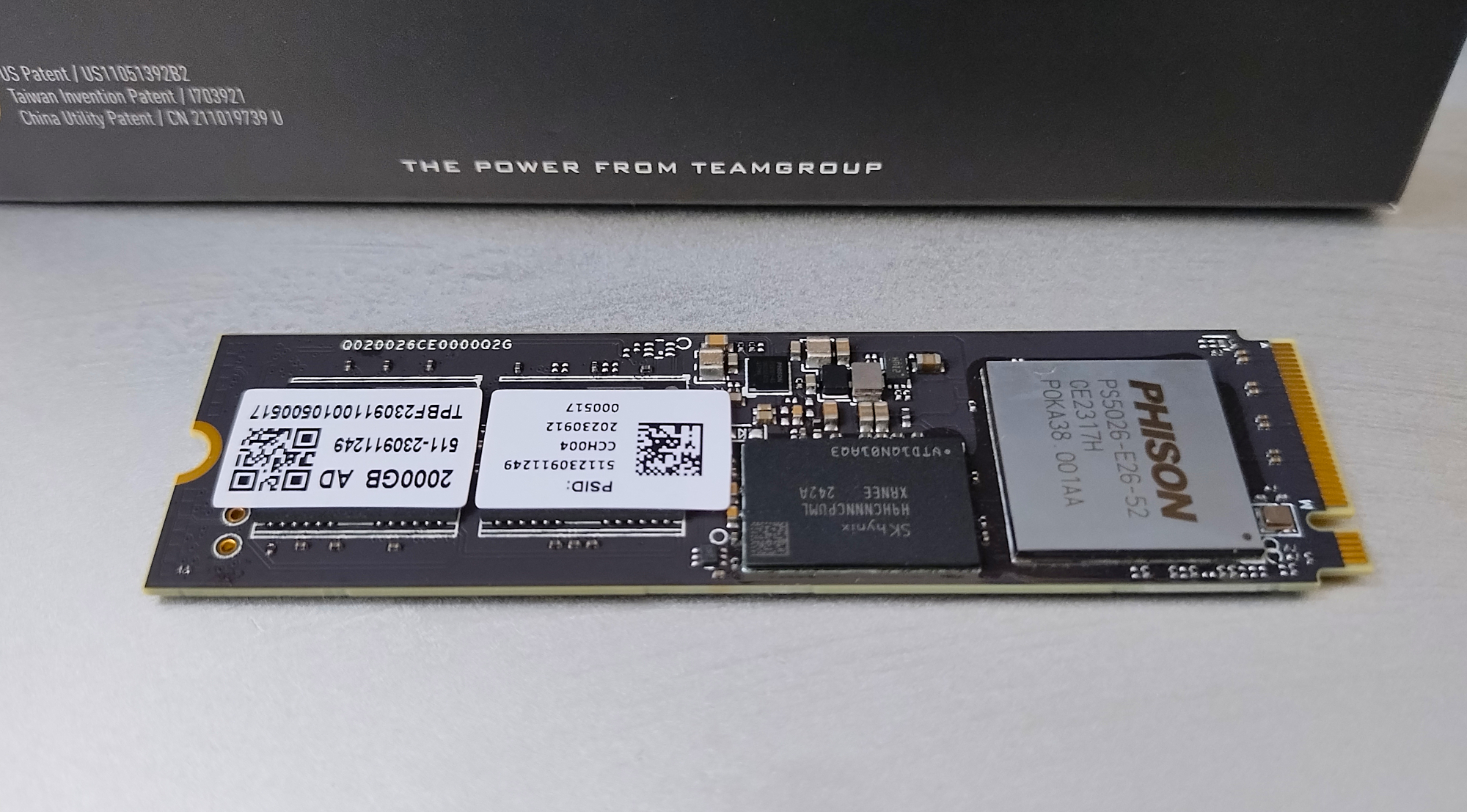
Pros
- PCIe 5.0
- Up to 4TB in capacity (soon)
- Second-fastest SSD we’ve tested overall
Cons
- Not particularly cheap
As with any PCIe 5.0 SSD, there are important caveats to bear in mind. For starters, you’ll pay a premium over extremely fast, and in some cases even faster NVMe PCIe 4.0 drives that employ a host memory buffer (HMB) design, as you can see in our review of the Solidigm P44 Pro — our pick for best PCIe 4.0 SSD.
But if you use multi-threaded software and your system sports a 13th/14th-gen Intel CPU (which the Phison PS5026-E26-52 controller inside this drive is optimized for), you can be assured of benchmarking-busting performance.
Now, in all fairness the Z540 isn’t the fastest PCIe 5.0 drive we’ve tested. It traded benchmark wins with our previous top pick the Crucial T705. But the Teamgroup Z540 has that competitor beat, decisively, when it comes to price, making it the clear pick for this category.
How can you argue with the Z540’s $143, $247, and $470 asking prices for 1TB, 2TB, and 4TB, respectively, compared with the T705’s $155, $280, and $515 prices, when performance is so close? That’s the kind of savings that pushes a close-second winner into the lead, in our book.
That being said, keep an eye on those prices, because they are always changing, and today’s alternative pick could easily become tomorrow’s best buy. Similarly, Corsair’s MP700 Pro SE offers very competitive performance that could make it a tasty option if its prices are to come down.
Bottom line: PCIe 5.0 shoppers have lots to choose from!
WD Black SN770M SSD – Best SSD for Steam Deck
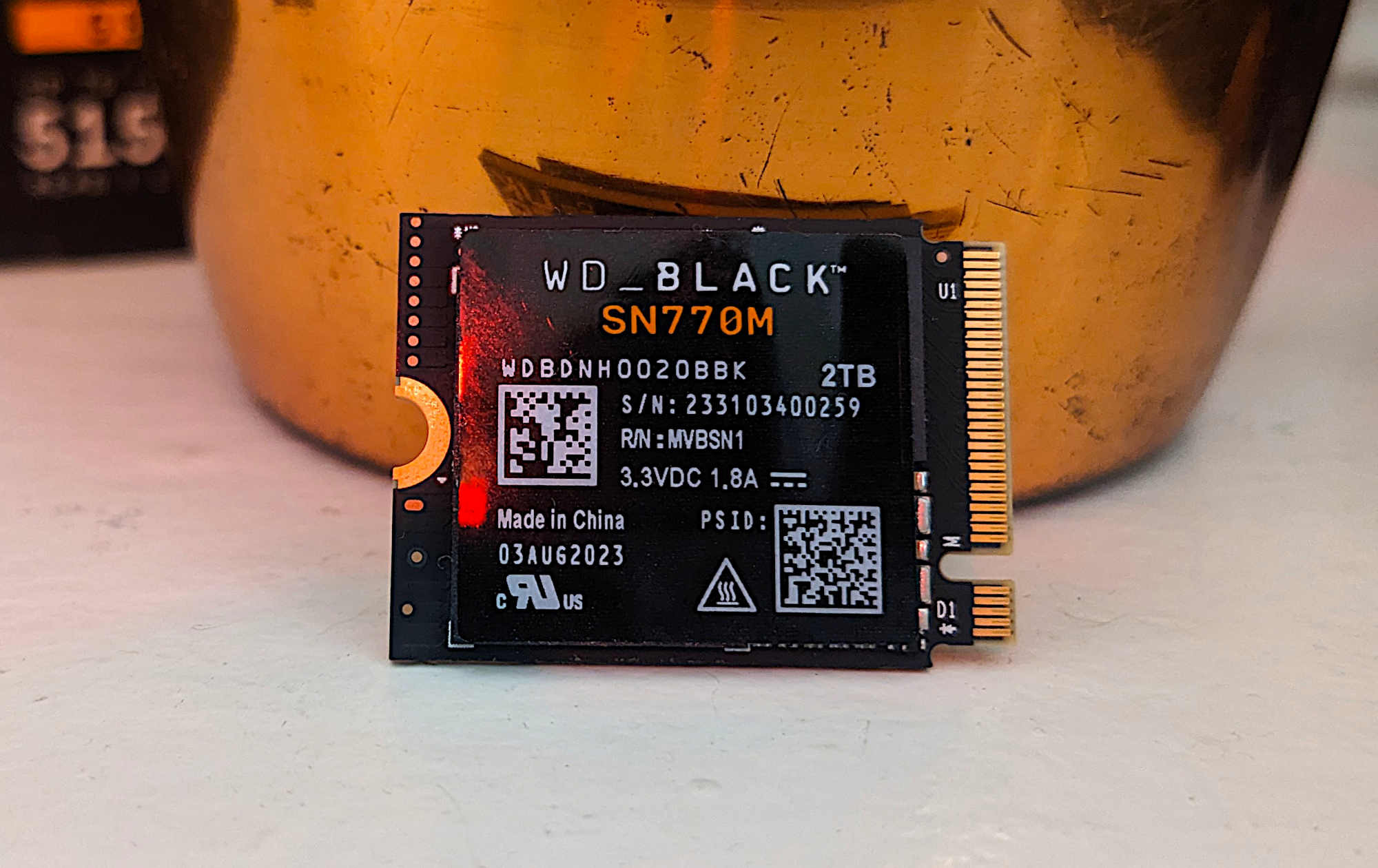
Pros
- Small 2230 form factor for handheld gaming rigs
- Up to 2TB of capacity
- Very good real-world performance
- 5-year warranty and good TBW ratings
Cons
- Slow writes when secondary cache is exhausted
- Requires host memory buffer support (HMB)
In the past, you were out of luck if you wanted to upgrade your storage in a smaller-sized device such as a handheld gaming console. The full-size 2280 NVMe SSDs wouldn’t fit. Thankfully, with the advent of more advanced handheld gaming consoles such as the Steam Deck, manufacturers are changing all of that. There are now a whole host of half-sized 2230 small form factor SSDs on the market. The latest from Western Digital, the WD Black SN770M is our favorite. It comes with up to 2TB of capacity and shockingly good real-world performance. It’s only 30mm long, which means it’ll fit perfectly into small devices such as the red-hot Steam Deck.
This HMB (Host Memory Buffer) drive has great everyday performance and a decent capacity-to-cost. In our testing it aced the 48GB and 450GB transfer tests—even beating out other top-notch full-sized PCIe 4.0 drives. The SN770M is a great SSD, but if your device is able to handle the longer 2280 drives, you’ll likely have more options to choose from and might be able to find better price-for-performance at that standard size. Regardless, this drive expertly fits a niche that is only growing more common with devices such as the Steam Deck.
Seagate Game Drive SSD – Best SSD for PS5
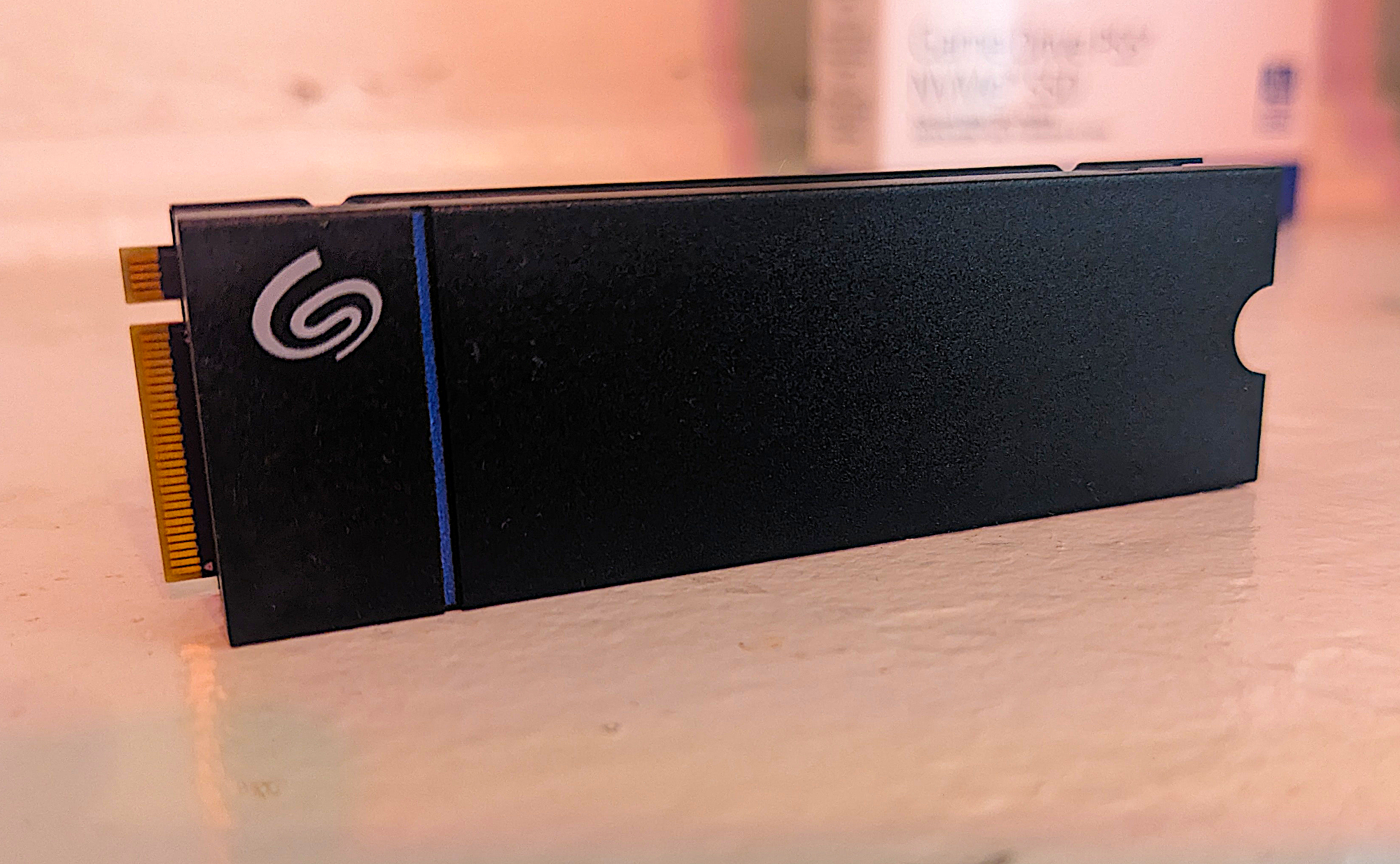
Pros
- Very good overall performance
- Excellent 4K performance
- Low-profile heatsink
- Twice the TBW rating of the competition
Cons
- A bit pricey
- No 4TB model
The Seagate Game Drive PCIe 4.0 NVMe SSD was made specifically for next-gen consoles—the PS5 in particular. And it doesn’t disappoint. Instead of HMB, it features DRAM for primary caching duties, which is practically essential for Sony’s console system. This is important because the PS5 doesn’t support HMB, so a drive such as this with DRAM cache is a must. The drive comes in 1TB and 2TB models, which means you’ll have plenty of space to store all of your games should you need it.
While the Seagate Game Drive is optimized for a PS5, it’s no slouch as a regular SSD either. In our speed tests it did remarkably well, earning the spot as the second-fastest PCIe 4.0 SSD with random ops that we’ve ever tested. Seagate also provides a generous five-year warranty with the drive and it has an astounding 1,275TBW rating—more than double the industry norm. The drive is a bit pricey, but the special optimizations for PS5 means that console owners can rest easy knowing that their money is going to good use with the Seagate Game Drive.
Crucial X9 Pro – Best external SSD
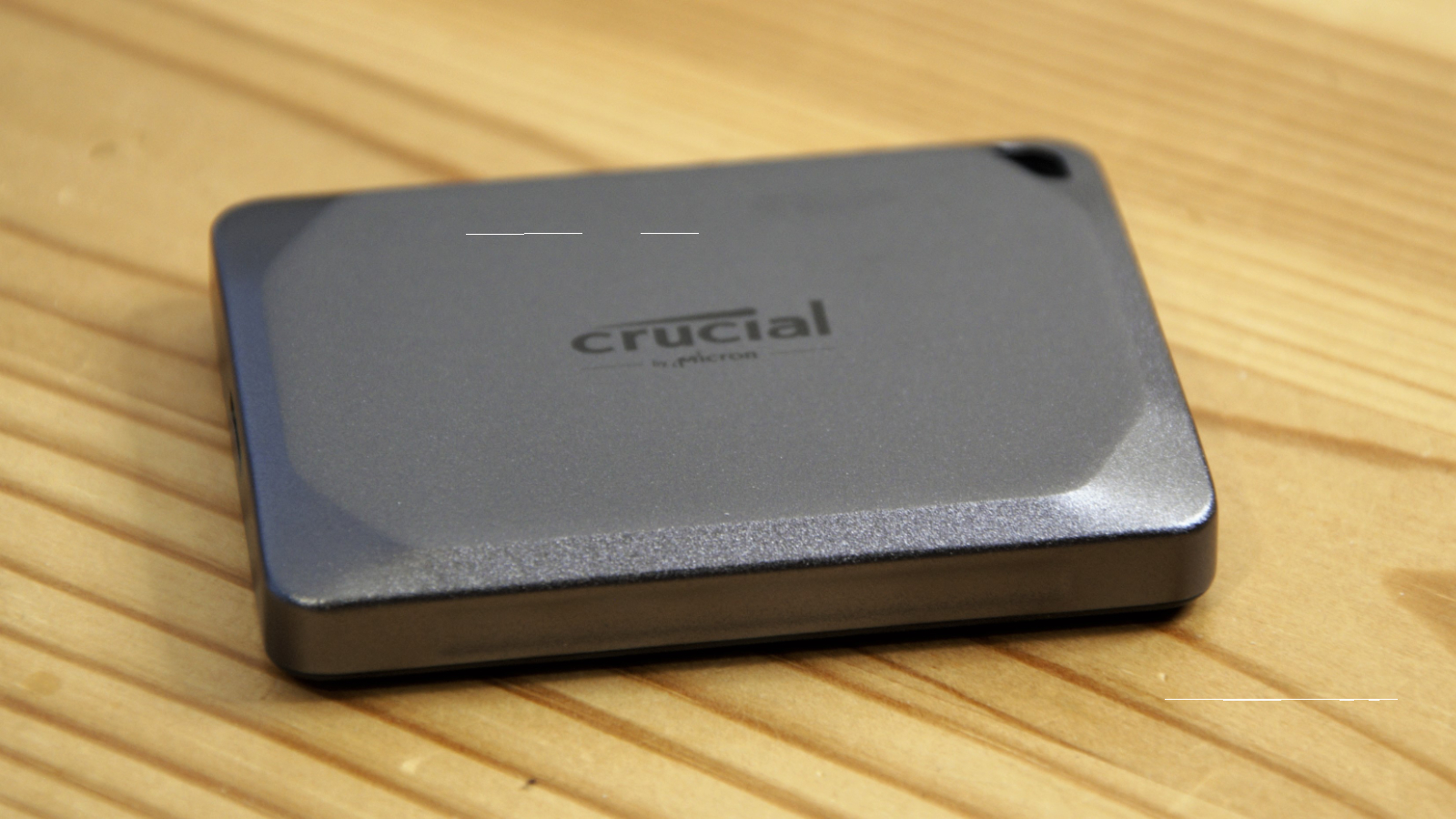
Pros
- Super small form factor
- Great 10Gbps performance
- Handsome design
Cons
- Not the least expensive 10Gbps SSD available
With great everyday performance and an affordable price, the Crucial X9 Pro is our favorite external SSD. This svelte beauty will give you transfer rates of 10Gbps and comes in 1TB, 2TB, or 4TB capacities with reasonable prices for each. In our testing we found that the X9 Pro performed admirably against the other 10Gbps competition. It especially excelled in the real-world 48GB transfer test and the 450GB write time test where it smoked other similar 10Gbps drives we’ve tested.
Crucial also has an X10 Pro model on offer that gives you 20Gbps transfer speeds, but you’ll pay quite a bit more for that extra speed. Regardless, we think that the X9 Pro will serve the average user perfectly fine with excellent all-around performance and a cheaper price point. You can’t ask much more from a 10Gbps USD external SSD than what the Crucial X9 Pro gives you.
Adata Elite SE880 SSD – Most portable SSD
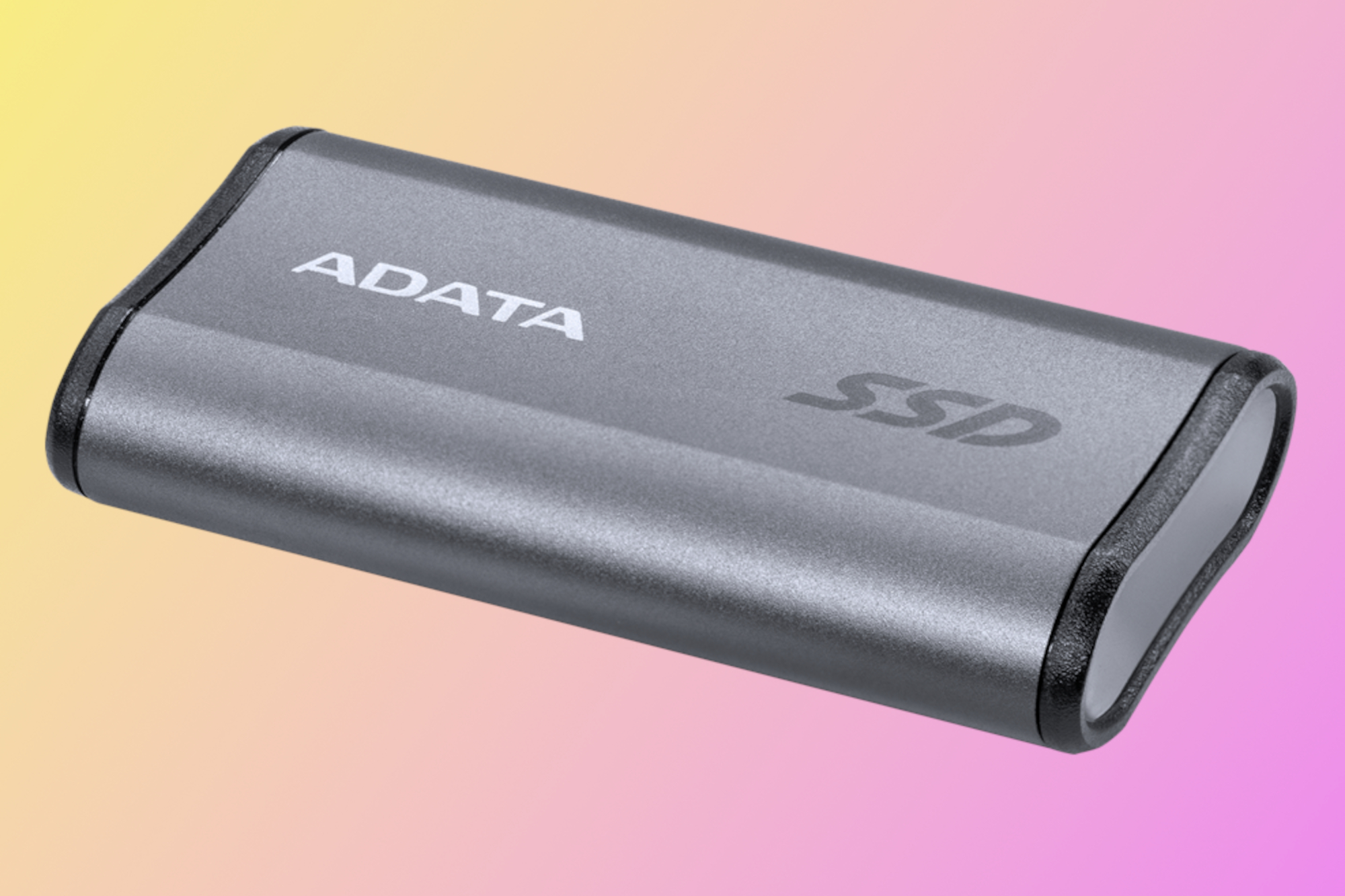
Pros
- Very fast, over-20Gbps USB connection
- Extremely small form factor
- 5-year warranty
Cons
- Slows considerably during long contiguous writes
- Somewhat low TBW rating
No SSD we’ve seen can match Adata’s Elite SE880 for portability. Indeed, measuring in at only 2.55 inches long, 1.38 inches wide, and 0.48 inches thick, it reminds you more of a USB thumb drive than a standard SSD. It weighs a mere 1.1 ounces to boot, virtually disappearing when placed in your pocket.
The Elite SE880 is also very fast at everyday tasks. In real-world 48GB transfer tests, the drive displayed outstanding marks. However, it did lose significant ground in the longer contiguous write tests meaning photo and video pros with large files might want to look at other options. Considering the respectable transfer rates and the small form factor, the Elite SE880 is a great pick for those looking to take their SSD on the go.
Our latest external SSD reviews
- SK Hynix Tube T31: For the folks who like the convenience of USB-A connector thumb drive with the peformance of an SSD, the Tube T31 belongs in your pocket.
- SanDisk Desk Drive USB SSD: On the other end of the spectrum, you have an external SSD that’s meant to stay put, on your desk, where its large capacity (4TB or 8TB) is at the ready as a capable and speedy alternative to an HDD for backups.
- Adata SD810: This is a solid 20Gbps drive, as long as you don’t need to write large amounts of data to it on a regular basis — in our tests, the drive slowed considerably in that scenario. That being said, the 4TB capacity is an especially good value at just $300.
NVMe SSD setup: What you need to know
Be aware of what NVMe drives deliver before you buy in. Standard SATA SSDs already supercharge boot times and loading times for PCs, and for a whole lot cheaper. You’ll get the most use from NVMe drives, be it in a M.2 form factor like the Samsung 980 Pro or a PCIe drive, if you routinely transfer data, especially in large amounts. If you don’t do that, NVMe drives aren’t worth the price premium.
If you decide to buy an NVMe SSD, make sure your PC can handle it. This is a relatively new technology, so you’ll only be able to find M.2-connection motherboards from the past few years. Think AMD Ryzen and mainstream Intel chips from the 6th-generation era onward, for the most part. NVMe SSDs that were mounted on PCIe adapters were popular in the technology’s early years, before M.2 adoption spread, but they’re rarer now. Make sure you’re actually able to use an NVMe SSD before you buy one, and be aware that you’ll need four PCIe lanes available in order to use it to its full potential. You’ll need a newer Ryzen 3000- or 5000-series CPU, or an Intel 11th- or 12th-gen CPU, to run a PCIe 4.0 SSD to its full potential. PCIe 4.0 NVMe SSDs will work in a PCIe 3.0 computer, but at slower PCIe 3.0 speeds.
To get the most out of an NVMe drive, you want to run your operating system on it, so you must have a system that recognizes the drive and can boot from it. PCs purchased during the past year or two should have no problem booting from an NVMe drive, but support for that can be iffy in older motherboards. Do a Google search for your motherboard and see if it supports booting from NVMe. You may need to install a BIOS update for your board. If your hardware can’t boot from an NVMe SSD, your machine should still be able to use it as a secondary drive.
What to look for in an SSD
Capacity and price are important, of course, and a long warranty can alleviate fears of premature data death. Most SSD manufacturers offer a three-year warranty, and some nicer models are guaranteed for five years. But unlike the olden days of SSDs, modern drives won’t wear out with normal consumer usage, as Tech Report tested and proved years ago with a grueling endurance test.
The biggest thing to watch out for is the technology used to connect the SSD to your PC. We go into deeper details and buying advice in our guide on which type of SSD you should buy.
- SATA: This refers to both the connection type and the transfer protocol, which is used to connect most 2.5-inch and 3.5-inch hard drives and SSDs to your PC. SATA III speeds can hit roughly 600MBps, and most—but not all—modern drives max it out. (More on that in the next section.)
- PCIe: This interface taps into four of your computer’s PCIe lanes to blow away SATA speeds, to the tune of nearly 4GBps over PCIe gen 3. Those sort of face-melting speeds pair nicely with supercharged NVMe drives. Both the PCIe lanes in your motherboard and the M.2 slot in your motherboard can be wired to support the PCIe interface, and you can buy adapters that allow you to slot “gumstick” M.2 drives into a PCIe lane. PCIe 4.0 drives are significantly faster, but require an AMD Ryzen 3000-series or Intel Core 11th-gen (or newer) processor, along with a compatible PCIe 4.0 motherboard.
- NVMe: Non-Volatile Memory Express technology takes advantage of PCIe’s bountiful bandwidth to create blisteringly fast SSDs that blow SATA-based drives out of the water. Check out PCWorld’s “Everything you need to know about NVMe” for a nitty-gritty deep-dive.
- M.2: This is where things get tricky. Many people assume M.2 drives all use NVMe technology and PCIe speeds, but that’s not true. M.2 is just a form factor. Sure, most M.2 SSDs use NVMe, but some still stick to SATA. Do your homework. Many modern Ultrabooks rely on M.2 for storage.
- U.2 and mSATA: You may also stumble across mSATA and U.2 SSDs, but both motherboard support and product availability are rare for those formats. Some older Ultrabooks included mSATA before M.2 became popular, and drives are still available if you need them.
Speed matters, of course, but as we said most modern SSDs saturate the SATA III interface. Not all of them, though.
SSDs vs. hard drives
Do you need an SSD? “Need” is a strong word, but we heartily recommend that everyone upgrade to an SSD. Solid-state drive speeds blow even the fastest mechanical hard drives out of the water. Simply swapping out the hard drive in your old laptop or desktop for an SSD can make it feel like a whole new system—and a blazing-fast one at that. Buying an SSD is easily the best upgrade you can make for a computer.
SSDs cost more per gigabyte than mechanical hard drives, though, and thus aren’t often available in ultra-high capacities. If you want speed and storage space, you can buy an SSD with limited space and use it as your boot drive, then set up a traditional hard drive as secondary storage in your PC. Place your programs on your boot drive, stash your media and other files on the hard drive, and you’re ready to have your cake and eat it too.
How we test SSDs
Drive tests currently utilize Windows 11 (22H2) 64-bit running on an X790 (PCIe 5.0) motherboard/i5-12400 CPU combo with two Kingston Fury 32GB DDR5 modules (64GB of memory total). Intel integrated graphics are used. The 48GB transfer tests utilize an ImDisk RAM disk taking up 58GB of the 64GB total memory. The 450GB file is transferred from a Samsung 990 Pro 2TB, which also contains the operating system.
Each test is performed on a newly formatted and TRIM’d drive so the results are optimal. Note that as any drive fills up, performance will decrease due to less NAND for secondary caching, and other factors.
The performance numbers shown apply only to the drive we were shipped as well as the capacity tested. SSD performance can vary by capacity due to more or fewer chips to read/write across and the amount of NAND available for secondary caching (writing TLC/QLC as SLC). Vendors also occasionally swap components. If you ever notice a large discrepancy between the performance you experience and that which we report (systems being roughly equal), by all means—let us know.
